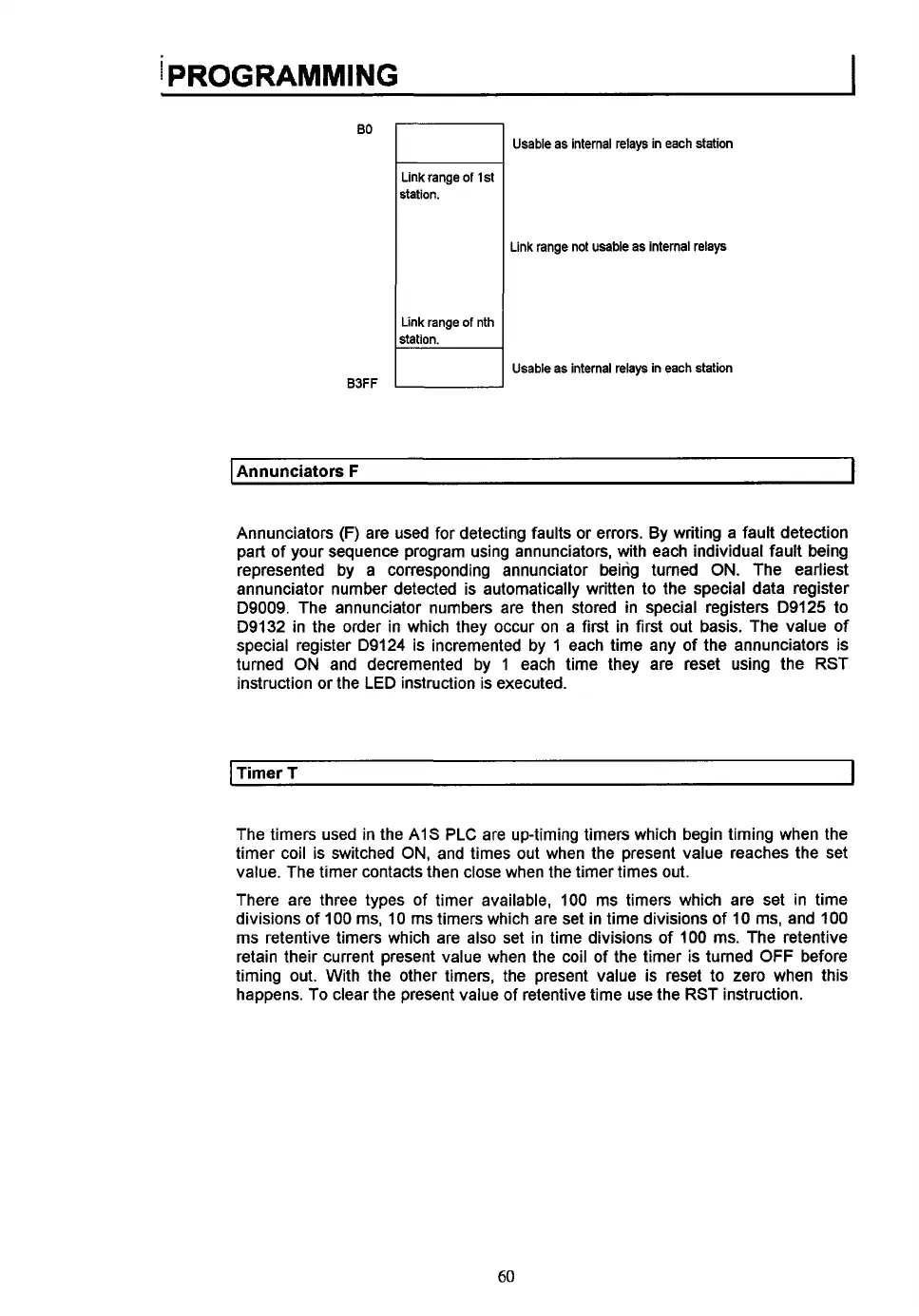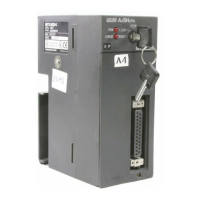I
PROGRAMMING
Bo
I
I
Link range
of
1
st
station.
Link range
of
nth
B3FF
I
Usable as internal relays in each station
Link range not usable as internal relays
Usable
as
internal relays in each station
I
Annunciators
F
I
Annunciators
(F)
are used for detecting faults or errors. By writing a fault detection
part of your sequence program using annunciators, with each individual fault being
represented by a corresponding annunciator being turned
ON.
The earliest
annunciator number detected is automatically written
to
the special data register
D9009. The annunciator numbers are then stored in special registers D9125
to
D9132 in the order in which they occur on a first in first
out
basis. The value of
special register D9124 is incremented by 1 each time any of the annunciators is
turned
ON
and decremented by
1
each time they are reset using the RST
instruction or the LED instruction is executed.
I
Timer T
I
The timers used in the AIS
PLC
are up-timing timers which begin timing when the
timer coil is switched
ON,
and times
out
when the present value reaches the set
value. The timer contacts then close when the timer times
out.
There are three types of timer available,
100
ms timers which are set in time
divisions of
100
ms, 10 ms timers which are set in time divisions of
10
ms, and 100
ms retentive timers which are also set in time divisions of
100 ms. The retentive
retain their current present value when the coil of the timer
is
turned
OFF
before
timing out. With the other timers, the present value is reset to zero when this
happens. To clear the present value of retentive time use the RST instruction.
60

